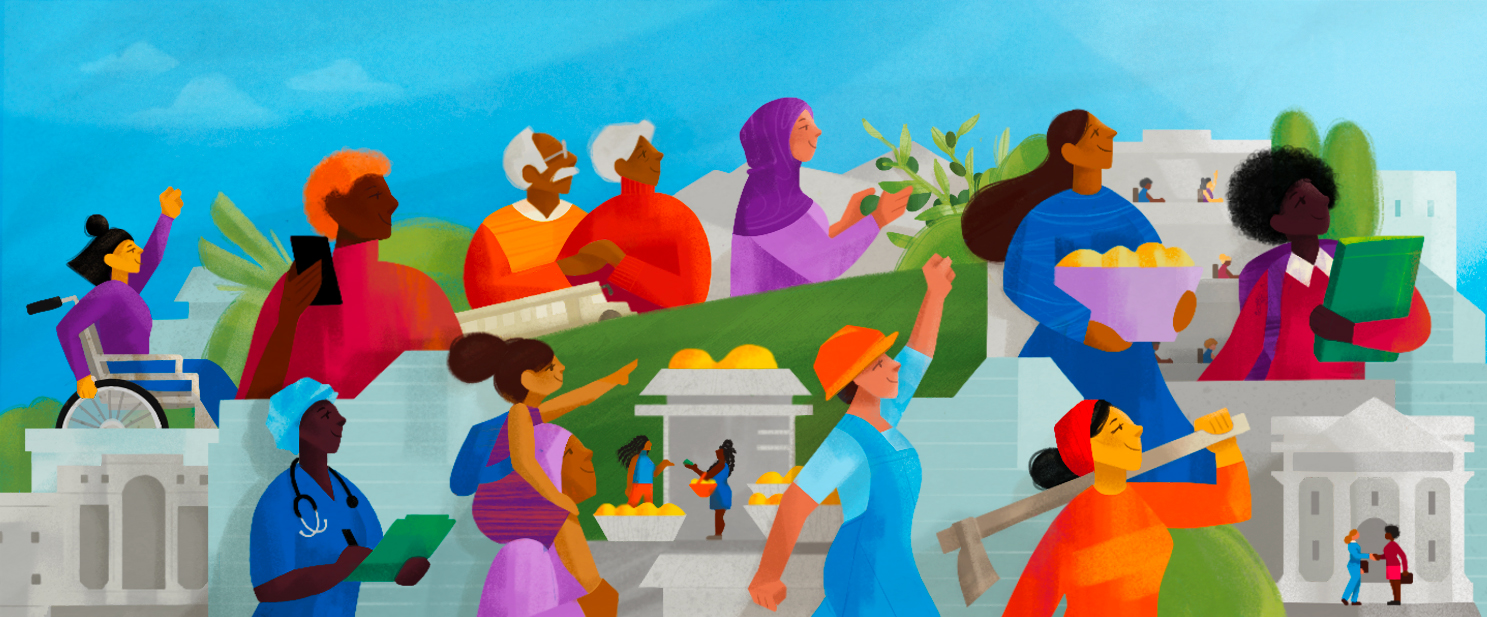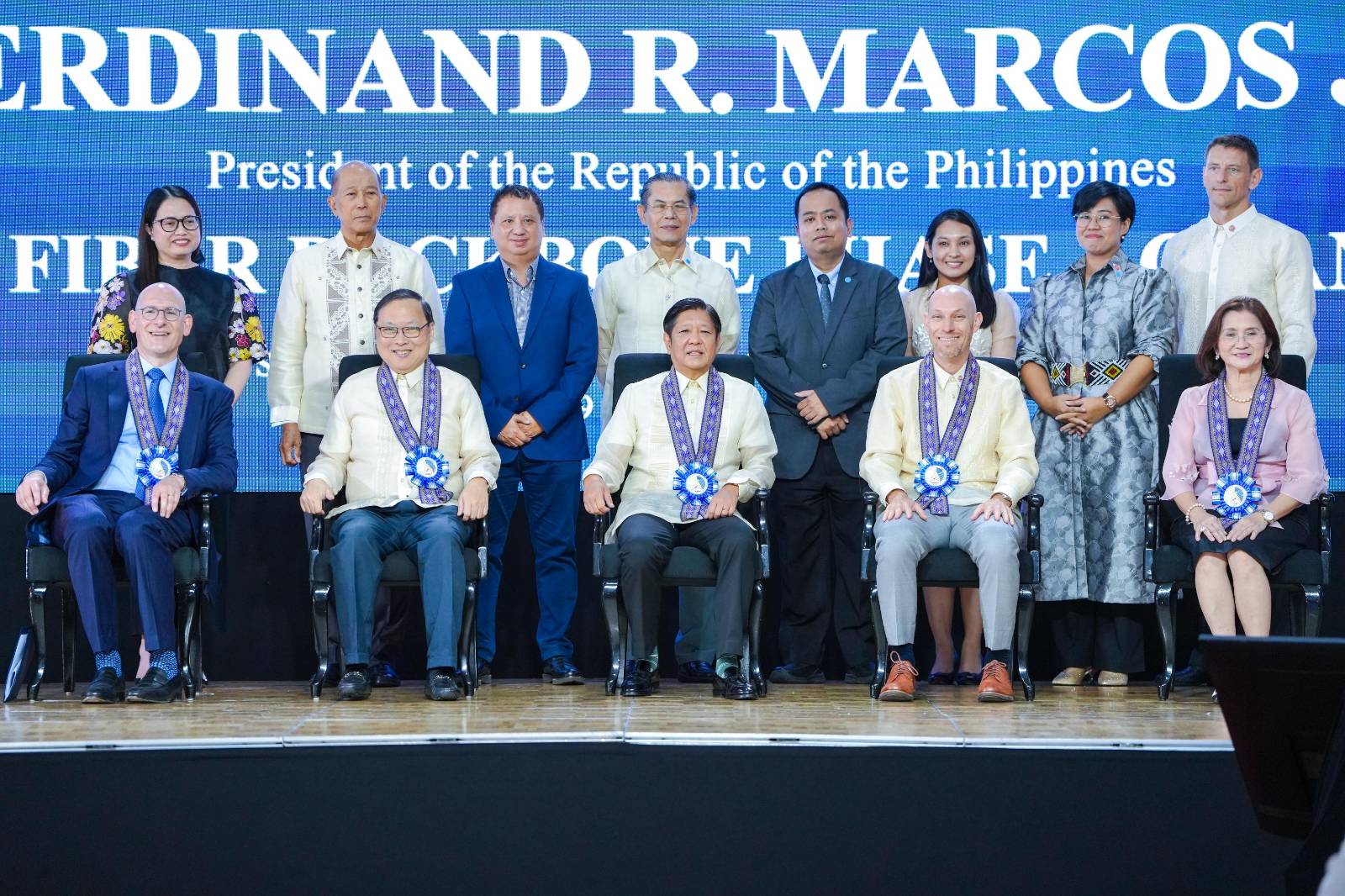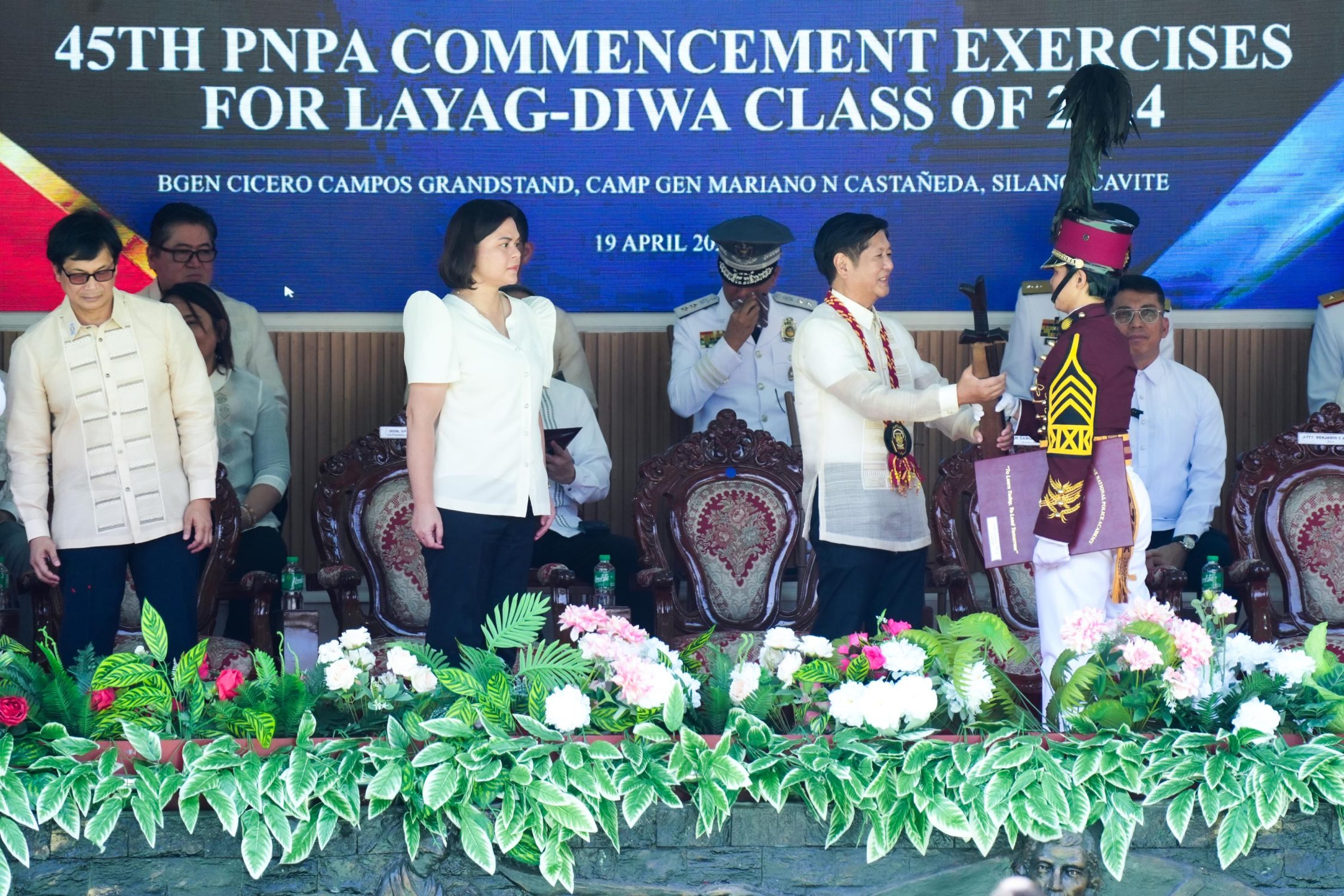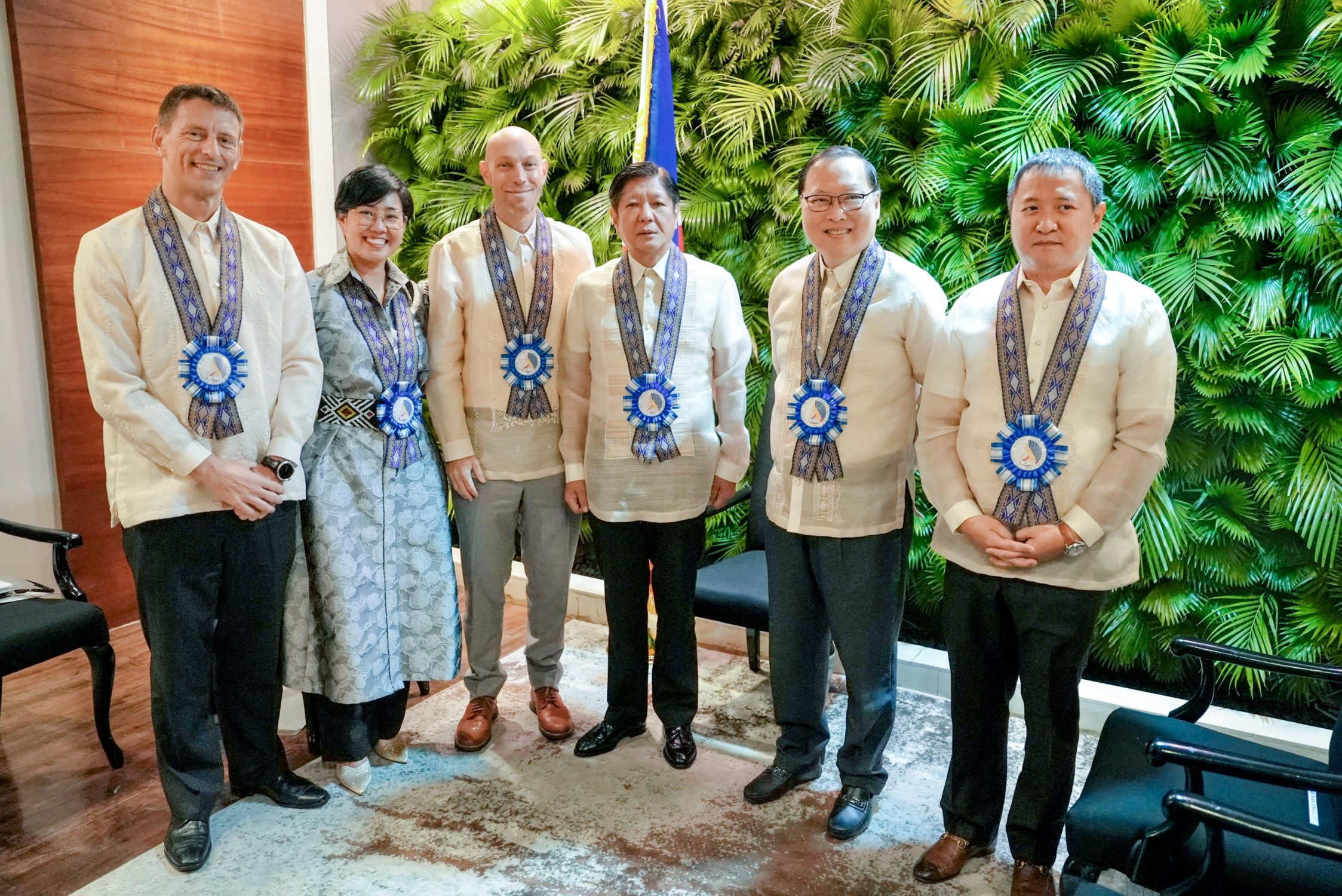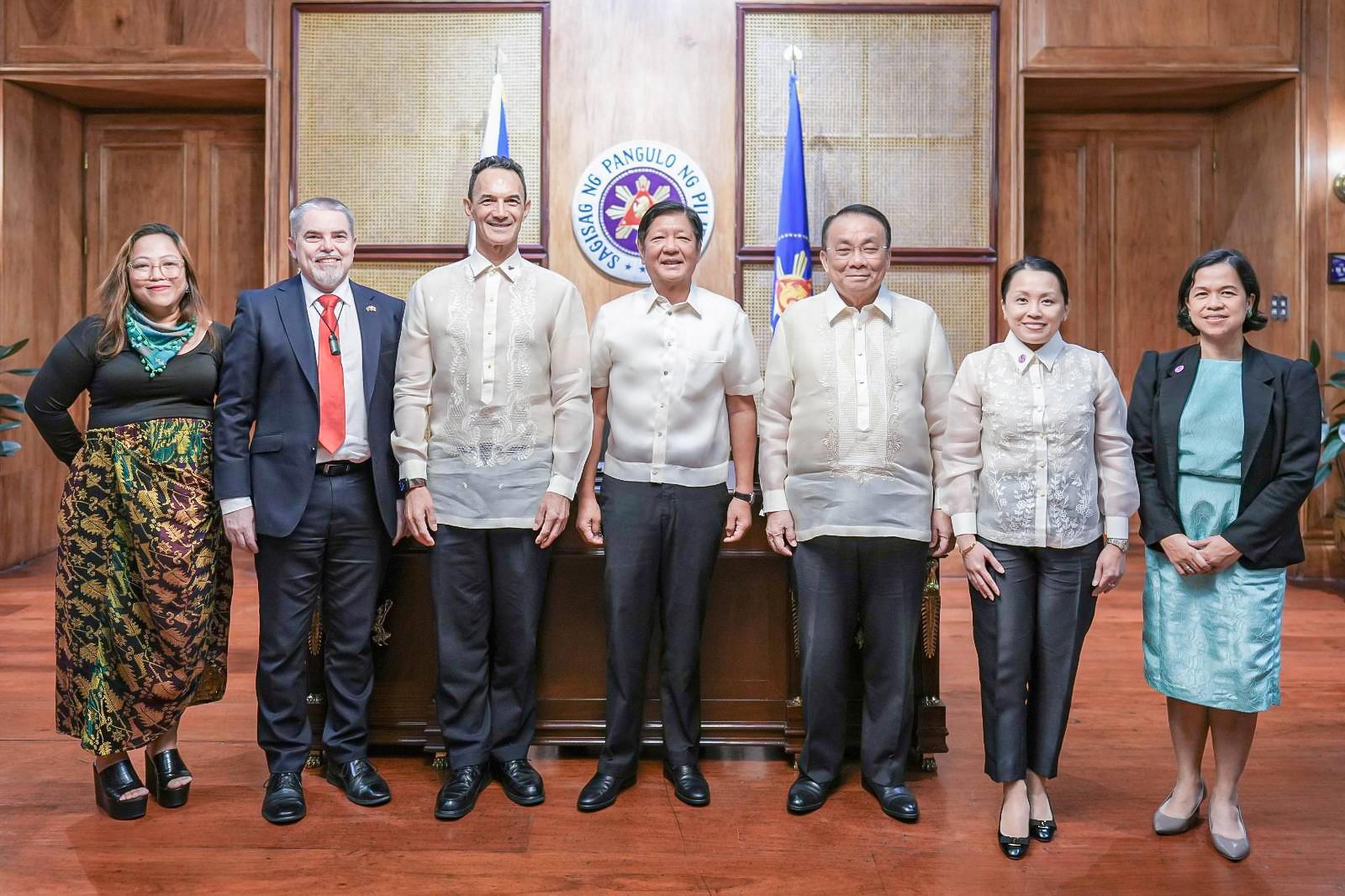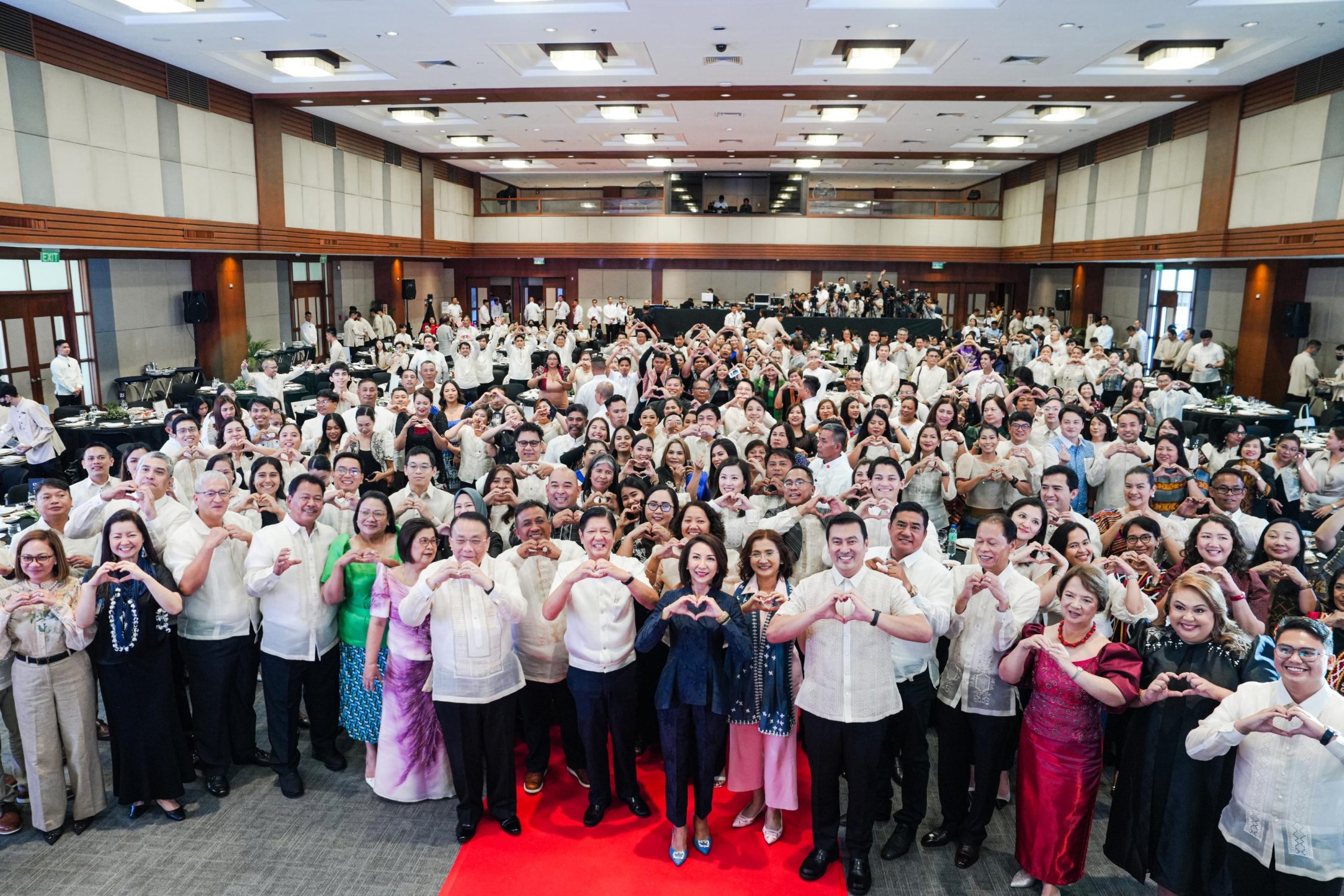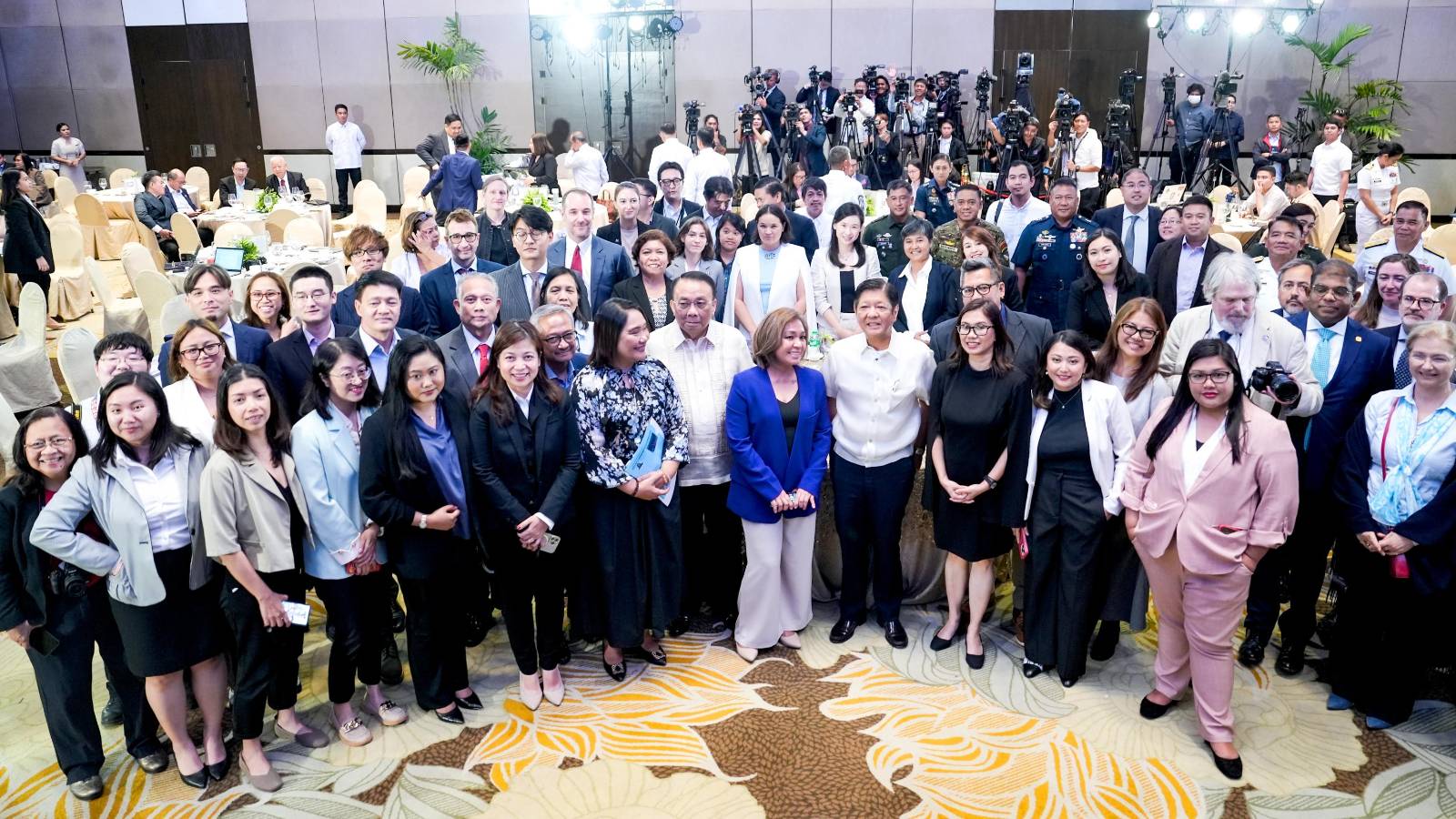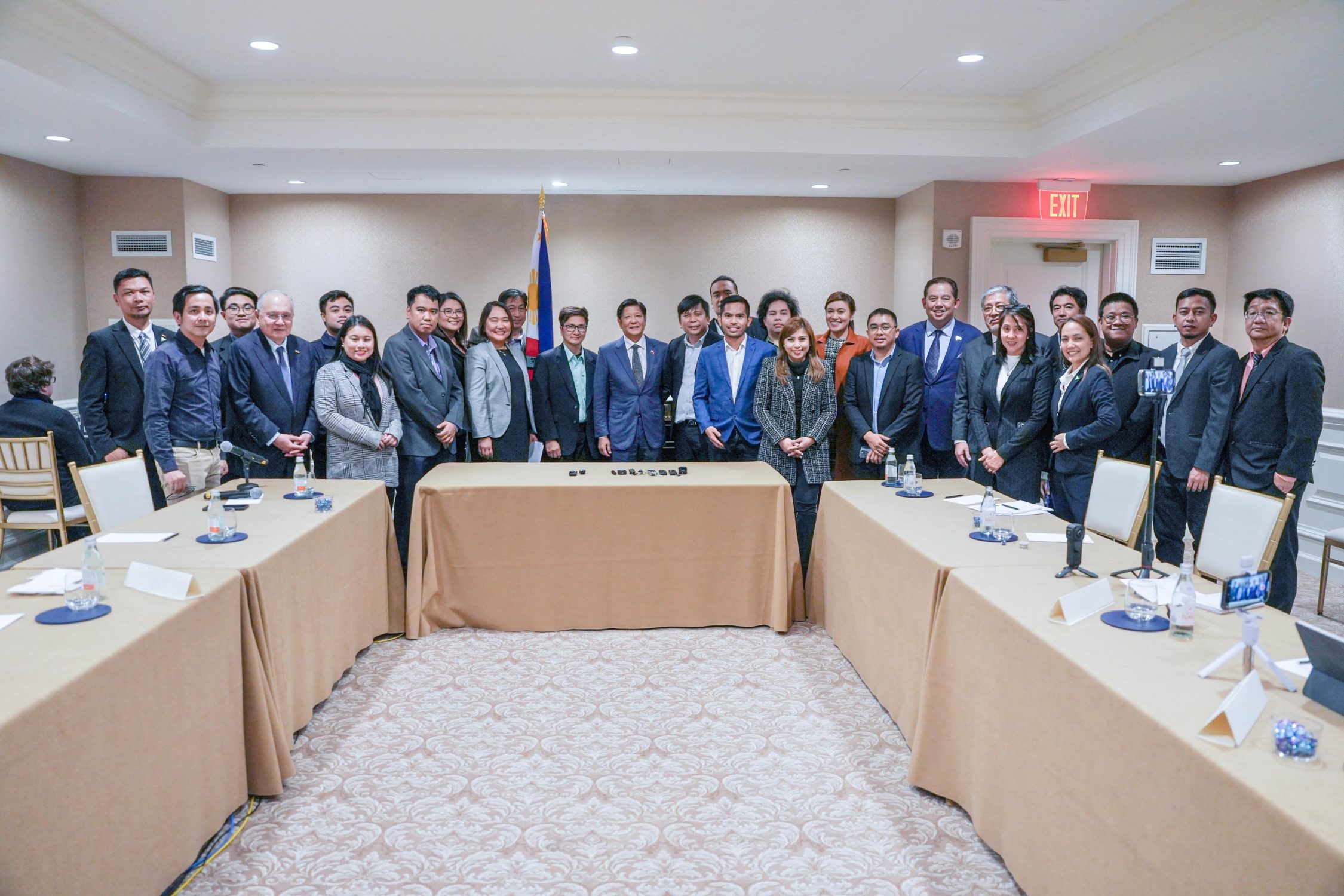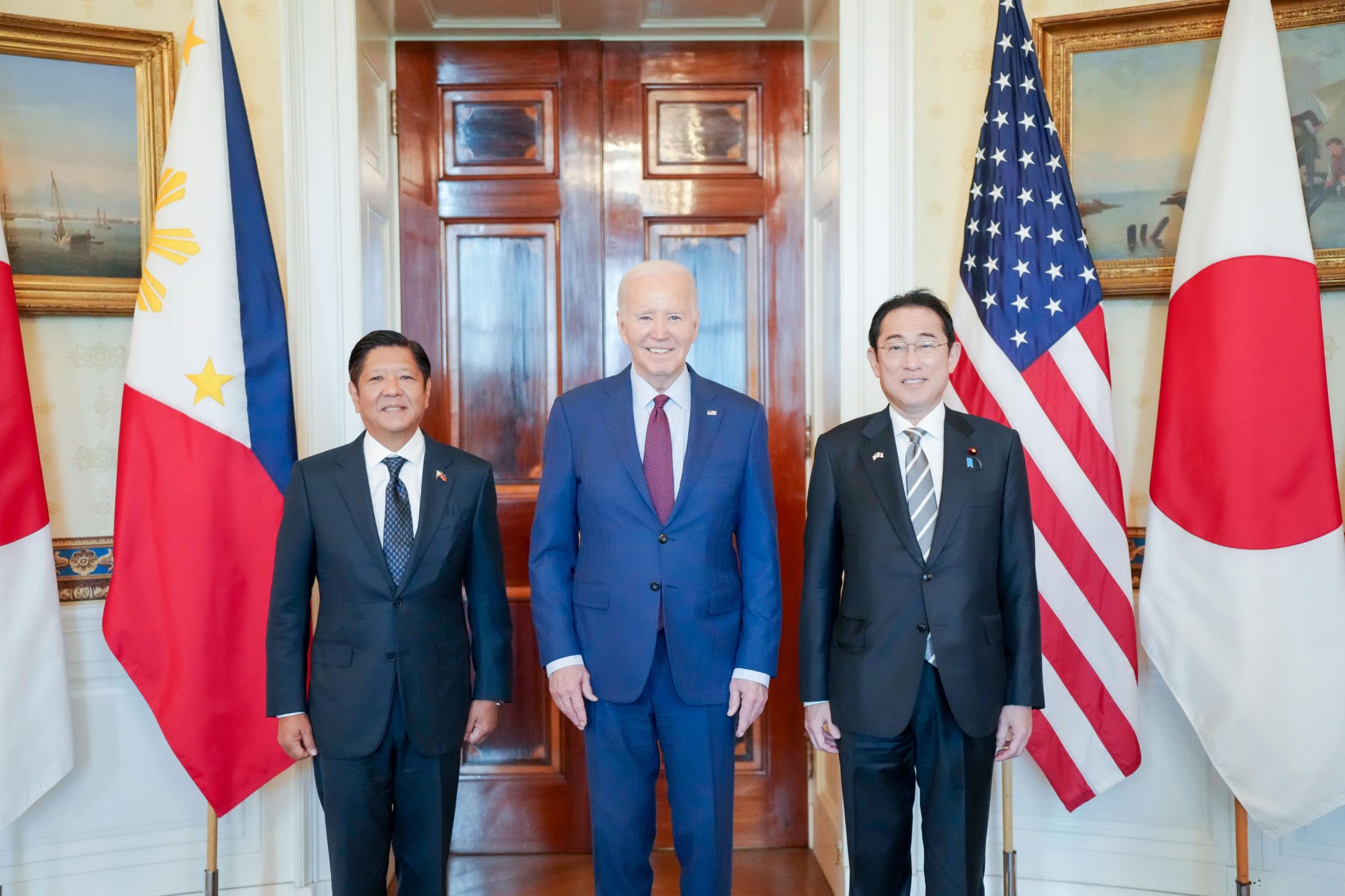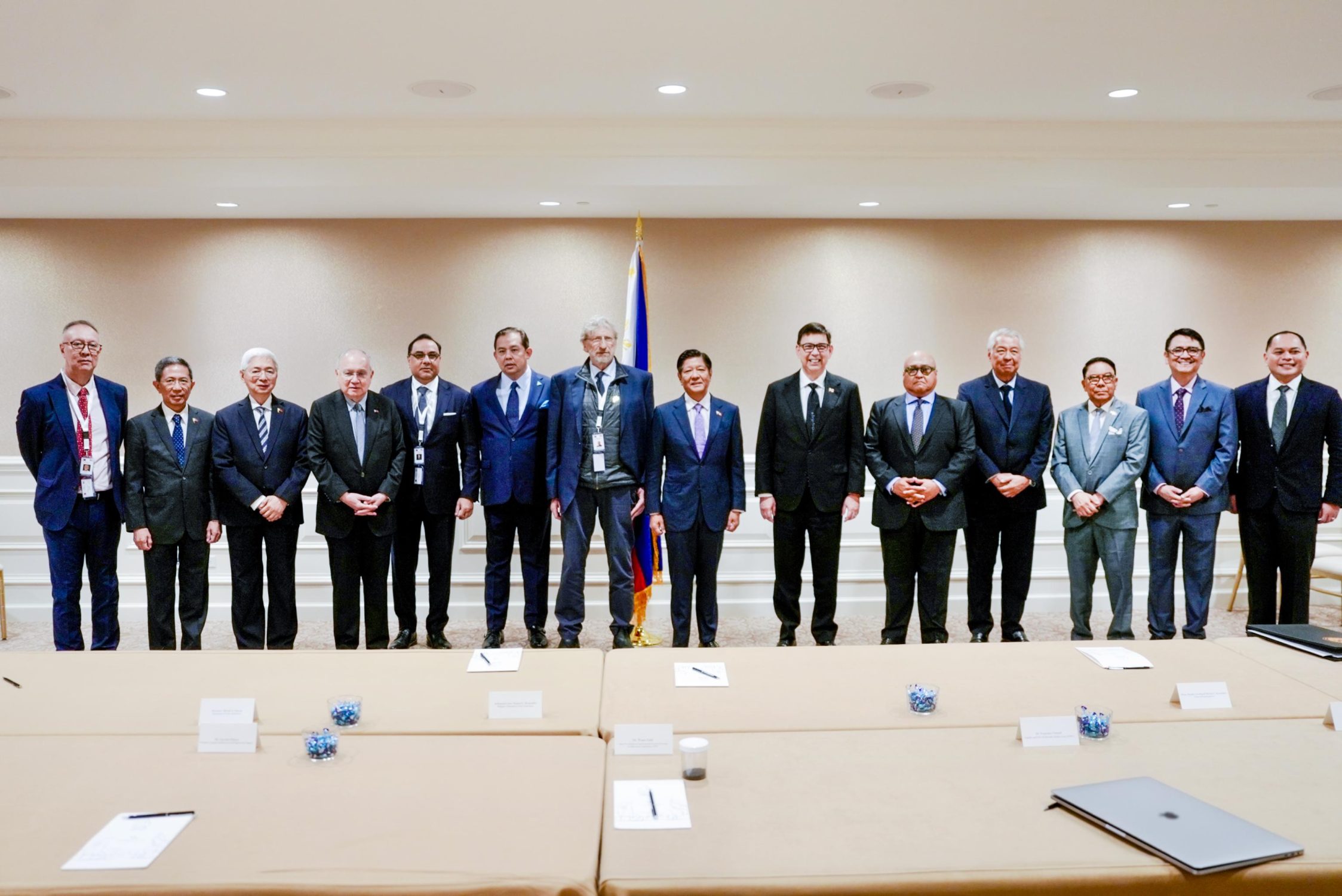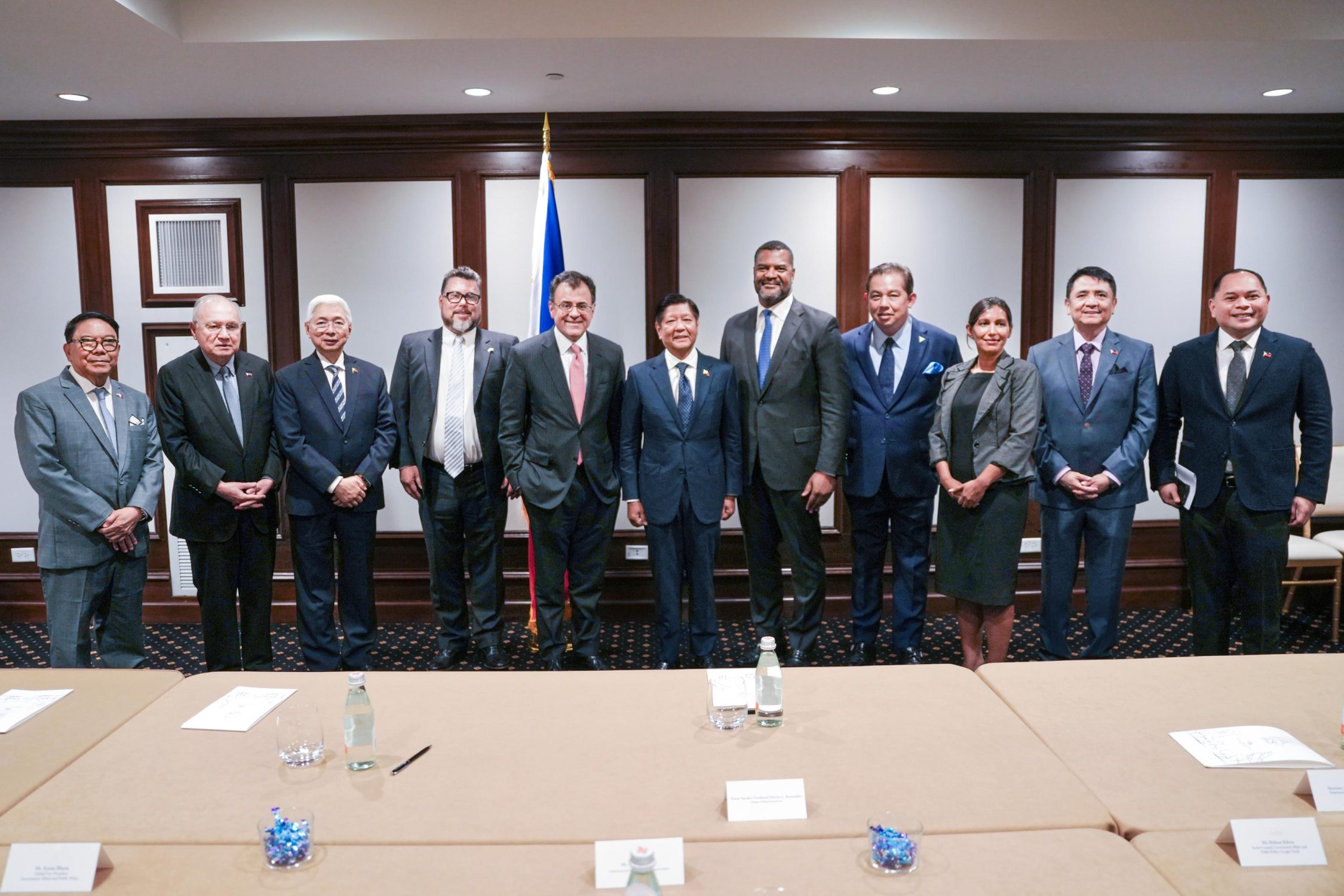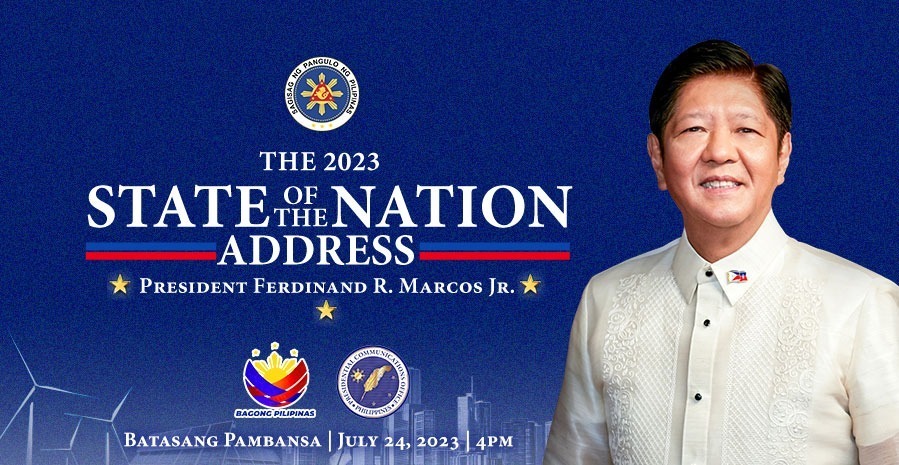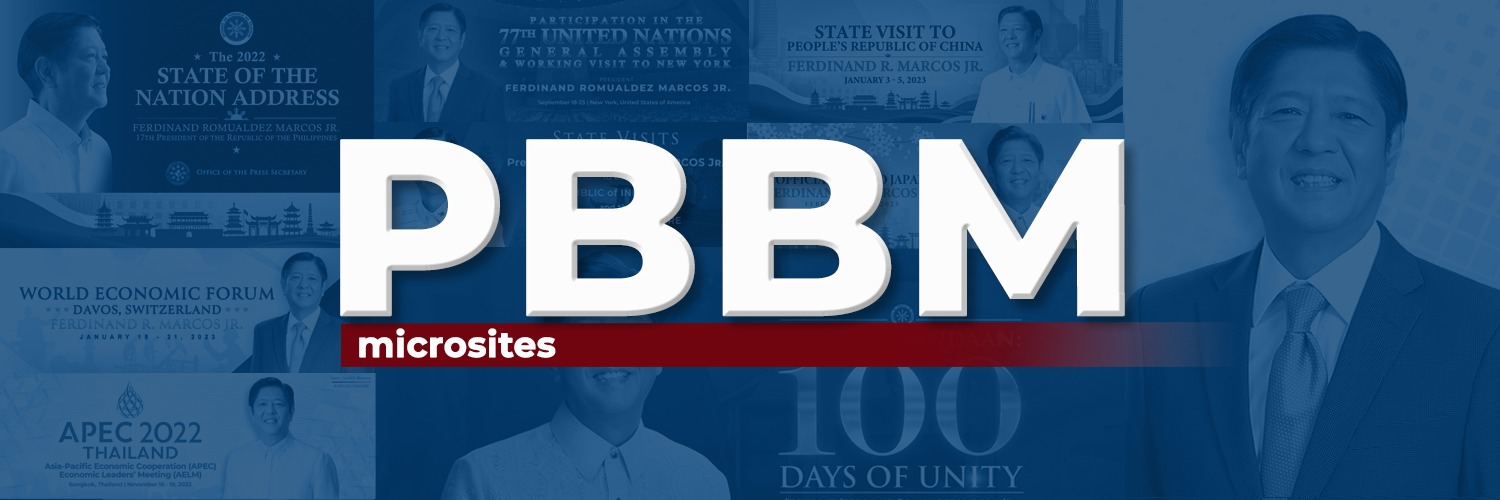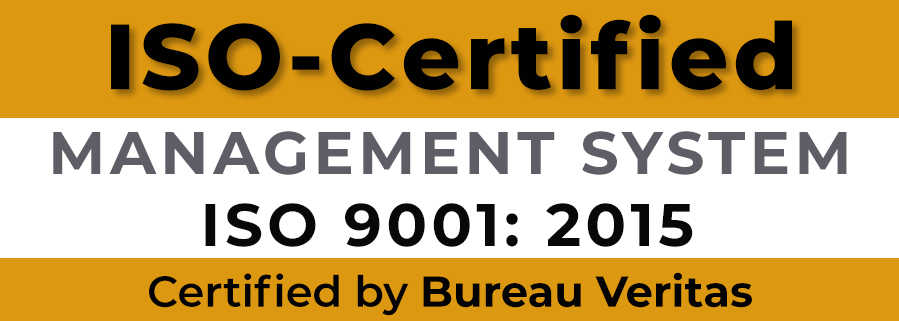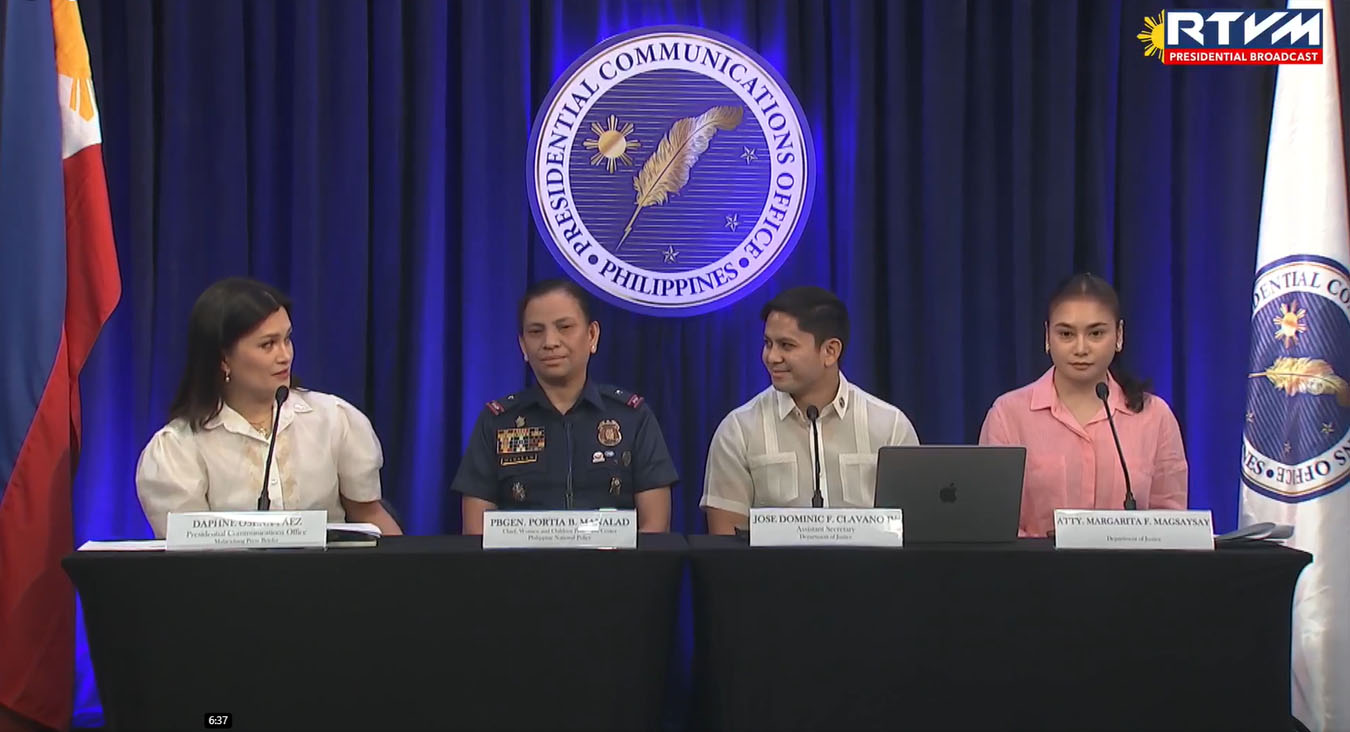January 18, 2017 – Press Briefing by Presidential Spokesperson Ernesto Abella and Department of Agriculture (DA) Secretary Emmanuel Piñol
| Press Briefing by Presidential Spokesperson Ernesto Abella and Department of Agriculture (DA) Secretary Emmanuel Piñol |
| Press Briefing Room, New Executive Building, Malacañang |
| 18 January 2017 |
| PRESIDENTIAL SPOKESPERSON ABELLA: Good morning. Our guest for today is no stranger to us. It’s his second time to be our resource speaker.
Agriculture Secretary Emmanuel Piñol is a seasoned print and broadcast journalist who served as a close-in writer of President Fidel V. Ramos in 1992. He served as a Municipal Mayor of M’lang in 1995 to 1998; North Cotabato Governor in 1998 to 2007; and Cotabato Vice Governor from 2007 to 2010. Ladies and gentlemen of the Malacañang Press Corps, please welcome Secretary Manny Piñol. SEC. PIÑOL: Thank you Mr. Secretary. The country is facing challenging times in view of climate change. In fact, just yesterday, we received report from Northern Mindanao that flash floods caused a lot of devastation and damage not only to property and lives but also to agriculture. In the face of this problem, the Department of Agriculture is focusing on its ability to be able to adapt to climate change. And I would like to start my presentation to you today with the announcement that as part of our efforts to produce more in the fishery sector, to protect the fishing industry, we have started an annual search for the most outstanding coastal communities in the country based on five criteria: Number one, these coastal communities must not have illegal fishing, no illegal fishing. There must be a self-proclaimed closed fishing season to allow the fish to spawn and produce more. There should be a declared marine sanctuary. There should be no garbage in their coastal waters and there should be a mangrove protection area. The winners of this annual search will receive a presidential award. It’s called ‘MMK.’ It’s not ‘Maalala Mo Kaya’ ‘no. It’s ‘Malinis at Masaganang, Karagatan.’ And the first place coastal community will receive 20 million pesos. Let me show to you the video that promotes this program: Regional winners were already chosen and of the regional winners, five finalists will be announced on February 1. And during the same ceremony, we will award the top three coastal communities. The grand prize winner, the presidential awardee will receive 20 million pesos, and this could be used for livelihood programs and projects in their coastal community. The second placer will receive eight million pesos, the third placer will receive five million. And the regional winners will receive two million pesos each. While we are giving incentives to coastal communities to protect their fishing grounds, the President has also made it clear that just like the campaign against drugs and criminality, the campaign against illegal fishing will also be very, very strict. In fact, during the last Cabinet meeting, he announced that mayors and barangay chairmen of towns and villages where illegal fishing is prevalent will be identified later on and we are giving them six months until June. After that, the Department of Agriculture will file administrative charges against all mayors and barangay chairmen who could not stop illegal fishing in their communities. This is part of our advocacy to protect our fishing industry. With that, I would like to emphasize once again that this program is part of our effort to really protect our land, our fishing resources, our land resources ‘no. Yesterday, we received the report that flash floods damaged a lot of areas in Northern Mindanao and I would like to report to you today the…I would like to share with you today the initial report made by Director Carlene Collado of Region 10. In Bukidnon, 147 hectares of corn were affected in four barangays in Malaybalay City; in Impasugong, Bukidnon 2.5 hectares of corn; in Misamis Occidental, in Tudela, 112 hectares of rice areas ready for harvesting were damaged; in Plaridel, Misamis Occidental, 630 hectares of rice newly transplanted and vegetables two hectares were also damaged; in Oroquieta City, 128 hectares of rice in the tillering stage were also damaged; Misamis Oriental and Lanao del Norte have yet to report the damage. The region is ready with interventions. We have 6,200 bags of rice seeds available and also vegetable seeds and corn seeds. On Tuesday, I will make a quick visit to Northern Mindanao to assess the damage for myself. But beyond just providing interventions, this morning, I directed the National Coordinating Committee of the four agencies involved in environment and agriculture to take a look at the situation in Northern Mindanao. This is the second time that this happened to Cagayan de Oro. If you remember, Sendong also caused a lot of damage in Cagayan de Oro City. And we are looking at deforestation and the unabated cutting down of trees in the mountains of Lanao del Norte, Misamis Occidental, and Misamis Oriental as the possible cause of these flash floods. So we are taking a look at the situation not only in the context of providing immediate intervention but also long-term solution. With this, I am ready for your questions. Thank you very much. QUESTIONS AND ANSWERS: Marlon Ramos (Philippine Daily Inquirer): Sir, I will just ask about the promise of President Duterte to distribute sacks of rice to beneficiaries of the government 4Ps program instead of outright cash? SEC. PIÑOL: Actually, the decision on whether to distribute cash or rice to the 4Ps beneficiaries has yet to be finalized. Of course, there are divergent views on this matter. Some are saying that we just give them additional cash. I’m not in favor of that ‘no, because you know what would happen to that. Kung ang purpose talaga natin ay bigyan ng bigas na makain ‘yung mga tao, the last thing that you should even consider is giving them cash or even coupons because as we all know, there are instances where even the ATM cards of the 4Ps beneficiaries are being pawned ‘no. So what would stop them from selling the rice coupons? What would stop them from using the additional cash intended for rice allowance for purposes other than buying food for the family? Beyond that, I am of the view that if this program is properly implemented, meaning, if instead of giving them coupons or cash, DSWD would decide to buy rice directly from the farmers in the communities where the 4Ps beneficiaries are located. Then, not only would we be serving the purpose of giving rice ration to the poorest of the poor in this country, the rice farmers will also benefit from this because then they will have a ready market for their produce, which is our problem right now actually. Giving our farmers access to the market is one of the biggest problems of the Department of Agriculture. Because as you know, every time harvest season comes, the traders and the middlemen, knowing for a fact that the farmers don’t have access to the market, would manipulate the price and lower the price during peak harvest season. So right now, the DA is looking at, you know, a strategy like say, for example, we’ve started it with the onion farmers of Nueva Ecija. They complained before December last month that they had a problem marketing their onions. What we did was I contacted Secretary Joey Concepcion, PA for entrepreneurship, and Secretary Mon Lopez of DTI and through the help of Ginggay Hontiveros, we arranged a meeting with the owners of SM Supermarket, Robinson’s, Rustan’s, Puregold, even Jollibee, McDonald’s, Max’s Chicken, Century Canning, all of these big users of onions and they agreed to buy directly from the farmers. This is the concept that we’re looking at right now. So if DSWD would agree, we could come up with a system where instead of buying — of bringing in imported rice, that’s a lot of logistical problems actually. You bring in rice from the warehouse of the NFA, distribute it to a family living up in the Sierra Madre. You might end up spending more in bringing that 20 kilos of rice to the farmer than the cost of the rice itself. So ang suggestion namin is, instead of buying — of using imported rice, why don’t we engage the farmers in our locality? Say, for example, sa halimbawa, sa isang bayan sa Panganiban, halimbawa, Panganiban, Catanduanes for example, kung ganyan karami ang kanilang 4Ps beneficiaries, then we can engage the rice farmers to produce for the number of 4Ps beneficiaries doon sa community na ‘yon para doon na lang iikot ‘yung pera at hindi na manggagaling pa sa labas ‘yung bigas na ibibigay sa 4Ps beneficiaries. So this is our proposal. And of course, there are, as I’ve said, there are divergent views on this issue but I really believe that the proposal that we have will bring a lot of benefits to a lot of sectors instead of just giving out cash or rice coupon to the 4Ps beneficiaries. Mr. Ramos: Sir, but is that feasible in some areas, some provinces which have limited areas devoted to rice? SEC. PIÑOL: Well, you will always have a province beside that province which would produce enough rice for the needs of the next province. Rather than…You know, the only other option is to import rice again from Thailand or from Vietnam tapos dadalhin mo rito, isa-stock mo sa NFA, ire-repack mo. Andaming gastos ‘non. At saka ‘yung paghahakot ‘non, paano mo hahakutin ‘yun sa bundok papunta sa bahay ng ano, pamilya? Itong setup na ginawa namin, ‘yung bigas para sa masa, Bigasan Para Sa Masa, ang concept was that in one community, we will organize the rice farmers, provide them with the facilities like a rice mill, for example, and then they will set up the outlets of — the rice outlets in the different barangays. Tapos ‘yung 4Ps beneficiaries, ipapakita niya ‘yang ID niya, he can withdraw the rice, sign the voucher and that Farmers’ Association can just bill the DSWD, sa kanila na magbabayad ang DSWD. It would make things easier, actually. Mr. Ramos: Can this be done within the year, sir? Kasi this was promised by the President during his SONA. SEC. PIÑOL: In as far as the DA is concerned, as soon as they give us the go signal, we’re ready. We’re ready. Our farmers actually are organized and all that we need to do is just identify ‘yung facilities kung saan namin imi-mill and then we can extend the needed interventions. Mr. Ramos: Sir, ‘yung doon sa flooding in Northern Mindanao, how will this affect the corn and rice production? SEC. PIÑOL: Not much. As indicated by the report coming from Region X, hindi naman ganoon kalawak ‘yung tinamaan na area. I think it was just isolated, concentrated in one or two specific areas ano. But I am alarmed actually at the recurrent flooding in that area. Kasi para sa akin — kasi I understand a little of environment and tree planting eh. ‘Pag flash floods ang tumatama sa isang lugar, there’s only one reason for that: wala ng kahoy na humahawak sa bundok at ‘yon ang dahilan kung bakit mabilis ‘yung pagbaba ng tubig. And for us to be able to address that, we really have to — DENR, kami, DA, DAR and the Bureau of Soil and Water Management will have to sit down again and, in fact, this morning, I already created the technical working group to proceed to the area, assess the situation, maybe use drones to survey the area, locate the risk areas, saan ba ‘yung mga hazards and start coming up with a plan. While, of course, some people may say that we are just reacting to a situation, wala tayong magagawa eh, ito ‘yung indication actually na nagkaroon tayo ng problema sa environment in that area. Mr. Ramos: Thank you, sir. SEC. PIÑOL: Thank you. Rocky Ignacio (PTV 4): Pero, sir, in coordination with the DILG dapat ‘yan? SEC. PIÑOL: Oh yes, DILG, I’m sorry. DILG. Cai Ordinario (Business Mirror): I just wanted to ask you regarding the agricultural damages. Magkano ‘yung estimate ninyo sa Northern Mindanao? Iyong total agri damages? And then also, regarding the quantitative restriction on rice, what is going to happen? SEC. PIÑOL: Cai, as of the moment we’re still awaiting reports from other areas ano. In fact, I’ve mentioned that Misamis Oriental and Lanao del Norte still have to submit their reports so I could not give you an exact figure. But kung reliable itong figures na ibinigay sa akin, it’s not that much ano. While of course, we’re sad that this happened, it will not really make a dent ‘no — a huge dent on the agricultural production on the region considering that is less than a thousand hectares. We can easily recover kasi ready ‘yung interventions. Quantitative restrictions. I have always maintained that the Department of Agriculture will stand by the position of the rice farmers of this country. That we believe that we should be given an additional two years extension on the quantitative restriction. By the way, for those who do not really understand what qualitative restriction is. Sa ating dealings with the World Trade Organization, humingi tayo ng certain period of time within which to protect — to prepare our farmers for the inflow of imported rice ‘no kasi ‘yung opening ng markets natin. So we were given until July 1 or end of June 2017 ‘no to prepare for that. That’s our third, that’s our second extension actually. Ang problema, during the period within which we should have prepared our farmers, we failed to deliver. Government failed to deliver. And I am not blaming anybody ano. I am not blaming a specific administration, I am not blaming a specific individual for this ‘no. But the plain and simple truth is that government has failed to deliver. We failed to deliver on our irrigation systems. We only have 1,300 hectares, according to the NIA figures of irrigated rice farms. Of the three million — one million three hundred hectares ang irrigated of the 3.9 million hectares estimated rice farms. So meron ka pang 2.6 million hectares na hindi irrigated and these areas can only produce once a year, during the rainy season. And you have to understand that during the rainy season, the productivity of the rice is not as much as during the dry season because it is during the dry season when photosynthesis is very efficient and it contributes to greater productivity. But you need irrigation during the dry season kasi kung wala kang tubig ‘pag dry season, although maganda sanang magtanim kung may irrigation ka dahil maganda ‘yung photosynthesis, hindi ka rin makapagtanim so you only — the country is missing a lot of opportunities, ‘no. That’s one. We have also failed to convince a lot of our farmers to adopt hybrid rice seeds. You know the difference between hybrid rice seeds and the traditional rice seeds being used by the farmers is huge. In fact, last July 6, 2016, when we asked the outstanding farmers — rice farmers of this country to report to us, ang sabi nila by using hybrid rice seeds they are producing eight metric tons per hectare per harvest. One even said he was producing 16 metric tons. But look the national average is only 3.9 metric tons per hectare per harvest. So halos doble. Ito ‘yung sinasabi ko sa kanila na alam ninyo malaking diperensiya kasi ‘yung traditional hybrid seeds as against — traditional seeds as against hybrid seeds. Para mong pinagkumpara ‘yung kabayong pangkaritela as against the kabayong pangkarera. Kasi ‘yung kabayong pangkaritela ang genetics ‘non, ang genes ‘non panghila lang talaga ng kalesa. Maski ano pang ipakain mo doon, maski ano pang abono ang ibibigay mo doon, hanggang hila ng kalesa lang talaga iyan. Hindi mo pwedeng ilaban ng karera iyon. While if you are using good genetics, ‘yung race horse, maski kulang pa nang konti ng pagkain iyon, kulang pa nang konti ng bitamina iyon, takbo ng mabilis iyon because ang genetics niya ay talagang pangkarera. Give him a little vitamins and better feeds and that horse will perform better. I am using this comparison to emphasize the importance of using seeds with good genetics. Kasi ito ‘yung kulang sa atin. As of the moment, of the 3.9 million hectare of rice farms, only 300,000 plus is planted to hybrid seeds. So right now, we are targeting about a million by this year. We are targeting about a million hectares na makumbinsi namin ‘yung mga farmers na mag-produce. But then again there is a problem there. Iyong mindset ng farmers kasi they don’t want to get out of their comfort zone. Iyon kasing nakasanayan nilang binhi is what they would like to plant again and again in spite of our efforts to convince them to shift to hybrid seeds. Number three, the cost of fertilizer is such that the farmers cannot afford fertilizers. Tapos kulang tayo ng mechanization. Mechanization actually we are losing 16 percent of our harvest because of post harvest losses. Walang pang ani, walang drying facilities, walang storage. Ang ating mga rice mills are outdated. They can only recover 60 percent of the palay milled when a good rice mill will be able to recover 67 percent. So it’s a big difference. Actually you are talking of 20 million metric tons of palay na imi-mill mo yearly and 7 percent noon hindi mo ma-recover. That’s a lot of rice. So ito ‘yung mga interventions sana na gusto naming i-deliver which were not delivered by the past administration. And again let me qualify this. I am not blaming anybody. I am not blaming anybody. I am not putting anybody to a bad light. Pero ito ‘yung katotohanan eh. Hindi natin nai-deliver ‘yung interventions. Kaya kami confident that within the next two or three years mai-deliver lang natin itong intervention na ito. What are these interventions? One, there should be support for very quick irrigation systems. I am proud to tell you that we already have a working model or the first solar powered irrigation system which could irrigate up to a hundred hectares costing less than 5 million pesos which could be constructed in less than a month. So ito ‘yung alternative naming kasi kung dam ang gagawin natin siyam-siyam ang aabutin natin. I would have already left the Department of Agriculture hindi pa tapos ‘yung irrigation system na iyan. You have to take into consideration the exponential growth of our population. We cannot irrigate our rice farms — rice lands in such a pace. We have to do it fast. Number two, we have to provide affordable fertilizers. I will ask for a review of the pricing of fertilizers in this country, it’s beyond the reach of farmers. Can you imagine 1,200 plus ‘yung Urea? Hindi kaya ng farmer ito eh. If you will ask him to fertilize 10 bags per hectare per planting that’s 12,000 pesos right away plus the cost of the hybrid seeds which would be about 4,500. Effectively, ang gagastusin ng farmer actually mga 25,000 eh for every hectare. And of course, third would be ‘yung mechanization. Kailangan na ma-mechanize natin. By the way, I would like to inform you that we have already started our negotiations with the Japanese government for an initial one billion dollar loan under JICA and the DA. This would be used in acquiring farm equipment — from tractors, transplanters, harvesters, dryers, post harvest facilities. And magkakaroon tayo ng sampung modules na gagamit nitong mga equipment na ito and ‘pag successful ‘yung concept, we will expand this. Initially, the area to be covered is about 10,000 hectares. The only saving grace actually is this, even if the QR is lifted by June 30 we still have to contend with the tariffication code of the country. Hindi pa rin pwedeng ma-implement ‘yung pagpasok ng bigas unless ma-set — ma-amend ‘yung tariffication code because that is very important. So without that, without that, hindi pa rin magiging effective or ma-i-implement fully ‘yung pagpasok ng — unregulated na pagpasok ng important na bigas sa Pilipinas. That is the position right now. That is where we are right now. But in the last meeting of the CTRM, the Cabinet Committee on Tariff and Related Matters ‘no, the consensus was against our protestation, the consensus was magla-lapse na ‘yung QR at wala ng magagawa ang gobyerno. But still we are hoping that our friends in Congress and the Senate will be sympathetic with the Filipino farmers. Ms. Ordinario: Sir, just a follow up. So we won’t be able to extend it anymore? Ms. Ordinario: Because of… Ms. Ordinario: So, sir, paano ‘yung ano — paano ‘yung sa Congress? How are you going to push the envelope, so to speak, kasi I mean… In fact, ‘yung free irrigation, for example, ‘yung mismong taga-NIA ayaw ‘non. But it was pushed in Congress and the Senate and it was Senator Loren Legarda actually who literally stamped her feet and said the President’s commitment to the Filipino farmers must be fulfilled ‘no. So, siya ang chairman ng Finance Committee talagang natupad ‘no. Naibigay ‘yung amount of two billion to cover for the ISF for 2017 that’s why we have free irrigation for 2017. In the same manner today, in my conversations with our friends in Congress and the Senate, I think, the sentiment of both Houses is that they are not about ready to amend the tariffication code. That’s my reading of their sentiments. I could be wrong but iyon ang reading ko. But even with the lifting of the QR, ‘pag hindi na-amend ‘yung tariffication code, hindi pa rin ma-i-implement ‘yung pagpasok, unregulated na entry ng imported rice. PRESIDENTIAL SPOKESPERSON ABELLA: Thank you, Sec. Piñol. The Philippines’ socio-economic landscape continues to show great improvement and policies are being set in place for sustainable economy and society. I’d like to share with you a few points. Number one, more foreign banks are entering Philippines this year. As reported by the Bangko Sentral ng Pilipinas, there are more banks that have expressed interest to come to the Philippines. They will not only provide competition to local lenders but also help potential investors from their own jurisdictions to set up shops here. These banks may operate in the Philippines as a branch or a wholly owned subsidiary. Also there are improvements in BIR, BOC in place as part of the tax reform measures. In the BIR, Finance Secretary Carlos Dominguez III, said the agency has started expanding its large taxpayers service to cover the top 3,000 corporations accounting for 75 percent of total tax revenues. As in the BIR, Dominguez said the Customs bureau is also eyeing the recruitment of about 3,000 young and talented people willing to work in a corruption-free Bureau of Customs. The Bureau of Customs is now completing the implementing rules and regulations of the Customs Modernization and Tariff Act. And he said to further step up both its anti-corruption and anti-smuggling operations while improving the facilitation of trade. Also the IMF raises the Philippine growth forecast. We welcome the latest forecast by the IMF on the countries growing economy. According to the International Monetary Fund, resident representative Shanaka Jayanath Peiris, the Philippines is expected to maintain its strong GDP growth momentum registered in 2016 into 2017 at a pace of 6.8 percent. We can achieve the growth as projected by the IMF increase in infrastructure spending and implementation of comprehensive tax reform package, which shall create more jobs, ease the cost of doing business and reduce poverty incidence rate. Also, the President had dinner with some Taipan’s last night. A group of big business leaders met with President Rodrigo Duterte last night over dinner. The meet up was facilitated by Presidential Adviser Joey Concepcion. He was a PA on entrepreneurship — in order to enroll them and bring them on board to the government’s agenda of inclusive growth. They opened discussion, touched on many topics federalism, contractualization, graft, job creation and tax reform. The President reiterated that he was all for job creation to uplift the people’s well-being. The one-hour meeting extended, — was extended to three and in the words of PA Joey Concepcion, everybody walked out extremely, extremely happy. I’m open to questions. Dexter Ganibe (DZMM): Yes, Sec. good afternoon. PRESIDENTIAL SPOKESPERSON ABELLA: Yes, good afternoon. Mr. Ganibe: Ano po ang reaksyon nung mga businessman doon sa isyu ng contractualization or endo? Lumabas sila kagabi na “extremely happy”? PRESIDENTIAL SPOKESPERSON ABELLA: Yes, because apparently they are engaged in conversation with the DOLE Sec. Bello. And they’re try — they are working out a win-win situation. In the words of Sec. Dominguez, that they are trying to work out a win-win situation. In other words, they are engaged in working out a situation which will be beneficial for both employees and both for—and for the employers. Mr. Ganibe: So mababago po ‘yung unang inilabas ng Department of Labor kaugnay doon sa memo nila for—doon sa contractualization? PRESIDENTIAL SPOKESPERSON ABELLA: We don’t have details yet, but they working on it. I don’t have the details but they working on it. Mr. Ramos: Sir, can you just tell us who were there during the meeting with President? The big visit…? PRESIDENTIAL SPOKESPERSON ABELLA: I cannot tell you everything, but as far I know JAZA was there, MVP, I think Mr. Sy, Ramon Ang was there also. Thank you. Mr. Ramos: All right, sir. [off mic] PRESIDENTIAL SPOKESPERSON ABELLA: Yeah that’s what I heard okay. All right anyway. Mr. Ramos: Sorry, sir, may open forum last night? Paano ‘yung—or just over dinner ‘yung…? PRESIDENTIAL SPOKESPERSON ABELLA: It was just a…I think it was over dinner, they had conversation. And apparently what — as far as PA Joey was saying that the—their preconceptions regarding the President were settled because of their one-on-one face-to-face conversation. Many of them had apparently never really met the President. But this is the first time they had — they had this face-to-face and the according to PA Joey a number of their uncertainties were settled. Mr. Ramos: Were there commitments made last night, for example, about additional investments in some areas where the President would like to make business deal? PRESIDENTIAL SPOKESPERSON ABELLA: Mainly they were there to show their support especially for improvement in areas of poverty and crisis and the conflicts. And, in fact, they had taken initiative regarding Sulu. And, I think, they—as far as I know, I think Sec. Sonny was also talking to them about how the Land bank had extra funds like something like US$40 million for improvements in other areas of Mindanao. So basically they were being brought on board to help address the issue of how to create a more inclusive economy, especially addressing work and investments, investments in areas of conflict. Cedric Castillo (GMA-7): Sir, good afternoon, sir. Sir, one question on the dinner with the tycoons, sir, then one on note verbale. Sir, ‘yung sa dinner po, Congresswoman Gloria Arroyo was there, sir, bakit po siya nandon sa dinner? PRESIDENTIAL SPOKESPERSON ABELLA: I was not… I’m not privy to that — to any reason why she was there. Mr. Castillo: All right, sir. Note verbale, sir. Has the government independently verified ‘yung reports that there are allegedly weapon system sa West Philippine Sea, South China Sea, sir? PRESIDENTIAL SPOKESPERSON ABELLA: I would like to quote a statement coming from DND, Secretary Lorenzana: “Despite warming relations between our countries — between our countries — we would be remiss if… We would be remiss in our duty to protect the national interest if it does not protest, question, and seek clarification from China on the presence of weapons on the Spratlys especially so that some of those reclaimed islands are within the Philippine exclusive economic zone according to UNCLOS and affirmed by the PCA ruling of the 12th of July 2016. The actions of China in militarizing those disputed features are troubling. They do not square with the Chinese government’s rhetoric that its purpose is peaceful and friendly.” Mr. Castillo: Yes, sir. Pero ‘yung basis po ba doon, sir, ay third party intelligence reports o meron po tayong independent verification as to the existence of the weapons? PRESIDENTIAL SPOKESPERSON ABELLA: I do not have those details but I simply have the statement of the Secretary. Mr. Ganibe: Follow up lang, sir, doon sa note verbale. So ibig sabihin, sir, based sa statement ng DND Secretary ‘yung note verbale ay just for verification or inaalam lang natin kung totoong meron doon ‘yung— PRESIDENTIAL SPOKESPERSON ABELLA: Simply they’re saying that… Simply they’re saying that, they, the Philippines is aware of the militarization in those areas and are confirming clarification regarding those matters. Mr. Ganibe: Okay, sir. On other issues, si Secretary Jess Dureza, nag-post sa kanyang Facebook na may dala siyang personal letter ni President Duterte. Papunta sila… Kararating niya lang kanina sa Rome at ito ay addressed to the Pope, pasasalamat daw sa pagbisita niya noong 2015. Any details doon sa letter, sir? PRESIDENTIAL SPOKESPERSON ABELLA: The letter was closed. Tina Mendez (Philippine Star): Sir, going back sa issue on China. Would you have information if the President, brought up these concerns by the Defense Secretary, with his, with the Vice Premier Liu Zhenmin last night? PRESIDENTIAL SPOKESPERSON ABELLA: The visit was simply a courtesy call. There were no discussions of political issues. It was just a pleasant exchange regarding the success of — their wishes for success of the Philippines’ success for chairmanship of the ASEAN. Ms. Mendez: But, sir, what about the timing of the visit? Hindi ba it came after there’s an issuance of note verbale? PRESIDENTIAL SPOKESPERSON ABELLA: It’s simply coincidental. Let me just read to you the visit proceeds on the agreement made between the President and President Xi Jinping during the former’s state visit to China on the 21st of October 2016 wherein both sides affirm the importance of existing Philippine-China bilateral dialogue mechanisms in enhancing, understanding, broadening cooperation, and striving for a stronger relationship. It was simply a resumption. It says the resumption of these bilateral dialogue mechanisms suspended during the previous administration is a significant development that allows for the building of confidence through regular dialogue along official lines. In other words, this is the first meeting in three years. So it’s part of a regular process. Mr. Ganibe: Yes, Usec. Ano lang… Doon ba sa letter ng Pangulo kay Pope, nag-express ba siya ng intention na personal ding bibisitahin si Pope? Kasi binanggit niya dati after ‘nong election na may plano siyang puntahan personal si Pope sa Vatican. PRESIDENTIAL SPOKESPERSON ABELLA: Probably so. But the letter is not open to others. It was simply directed to the Pope. Mr. Ramos: Just on the case of the abducted Korean businessman from Angeles. There were reports that the body was taken to a funeral parlor in Caloocan. Has the President been informed regarding the case of this Korean, abducted Korean national? PRESIDENTIAL SPOKESPERSON ABELLA: We do not have details regarding that incident, not at this stage but we can find out. Mr. Ramos: Because ‘yung involved po doon na pulis is actually in guise of conducting ‘tokhang.’ And there were previous similar incidents wherein Chinese traders from Binondo were also taken by supposedly policemen who were carrying out the President’s order to stamp out illegal drugs. Is the Palace concerned apparently some erring PNP personnel are using the President’s campaign? PRESIDENTIAL SPOKESPERSON ABELLA: Of course, of course, the Palace is concerned about all matters especially of crime and corruption. But regarding the details, those details, we will get it and we will find out and we’ll return it to you, Marlon. Mr. Ramos: Sir, is the Palace satisfied with how General Dela Rosa and the PNP are handling these cases? PRESIDENTIAL SPOKESPERSON ABELLA: There’s always room for improvement I’m sure. However, the President has not verbalized any dissatisfaction. Mr. Ramos: Are you aware if the PNP chief submitted a report on these cases? PRESIDENTIAL SPOKESPERSON ABELLA: I’m sure the director follows procedures. Mr. Ramos: Thank you, sir. |




